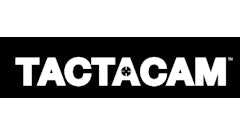
No matter how perfectly you set up your business, two things will rise up and create headaches every now and then: the economy and your people.
The economy is the economy. You have no control over the volume and quality of construction opportunities that are available at any point in time. Heck, even the Fed has limited control over that. The most control you will have is to establish yourself as the low cost provider for the customers you pursue and maintain a financial nest egg that you can draw on when the work dries up for several months.
Let’s switch our discussion to the item you can control: the effectiveness of your staff.
The keys to managing a staff effectively tend to go against common owner emotion. Most owners are fairly hard charging, command and control individuals by nature. They are cut from the cloth of "I pay these people a good wage to work hard and make good decisions."
Over the last 30 years, I’ve come to several conclusions about owners and managers (i.e. leadership). Along that journey I have several observations that led to those conclusions. One of the most notable observations was that owners fall into one of two categories.
They either feel their employees are replaceable cogs or they feel their employees are creators of competitive advantage. Unfortunately, the vast majority of the owners of small businesses I’ve run across are of the first mindset.
Owners who fall in to the first category will likely struggle meeting multiple outcomes all owners seek:
- The business will struggle to grow profitably
- The owner is handcuffed to the business 24/7
- The business is difficult to sell at a price the owner desires
- The best employees depart for greener pastures
- The business suffers high turnover in the field
Despite all of those repulsive outcomes, several of the businesses run by owners of that mindset will make money and be profitable. Their business will not be sellable, per se. The owner will need to work until his or her health prevents 24/7 involvement, and then he will simply close the doors and walk away after selling the equipment.
This is how most construction companies come to their end. There is nothing wrong with that, especially if the owner ran a profitable business for 10 plus years and socked a lot of money away.
Before you think I’ve gone soft or become a bleeding heart, let me assure you that owners who go overboard the other way will end up in even worse financial shape. Letting the inmates run the asylum is a recipe for disaster unless all of the proper business systems have been put in place to ensure everyone is committed to and helping build a business that can carry its success through multiple generations.
Owners need to maintain a balance between driving for results and helping their people succeed and grow. Enlightened owners understand that their people create their competitive advantage. To do so requires them to help their people enjoy their jobs, develop their careers and be effective in their current
Balancing career development and current assignment effectiveness is not easy. Employees need to be given assignments that stretch their current comfort level and skill set — but not too far. They need to be given enough repetitions to master the new skill. Managers need to control the impact of the errors and poor decisions they make along the way. That is where coaching comes into play.
When an employee is given a new and unfamiliar task, a task expert needs to be available to lend a hand at critical junctures. People learn from doing and from making mistakes. Upfront training is only mildly effective at teaching new skills. Nothing beats on-the-job training for developing task mastery.
What I am recommending is turning all of your experienced employees into coaches. Quite a shift in mindset from the standard keep the head down and crank out the work culture.
Employees with solid work ethics who are prideful of their profession will respond extremely well to the described coaching. As the team embraces the willingness to share knowledge and help one another out, the work place becomes an enjoyable place to spend time. It creates emotional bonds that pay huge dividends when the work load becomes oppressive and everyone is tired and frazzled.
Knowing that co-workers are willing to lend a hand and/or at least sympathize with the situation helps keeps spirits in a good place. It is the owner’s job to create this culture by leading the way. The owner sets the example by helping every employee he comes into contact with succeed and grow.
It is also the owner’s responsibility to ensure everyone understands the need to produce results — profitable results. The business exists to make money. Every employee needs to accept and commit to that outcome.
Every employee needs to realize the job is a two way street. Management is committed to helping each employee grow and succeed and each employee needs to help the business grow and succeed. Over the long haul one cannot exist without the other. Together everyone wins.




















